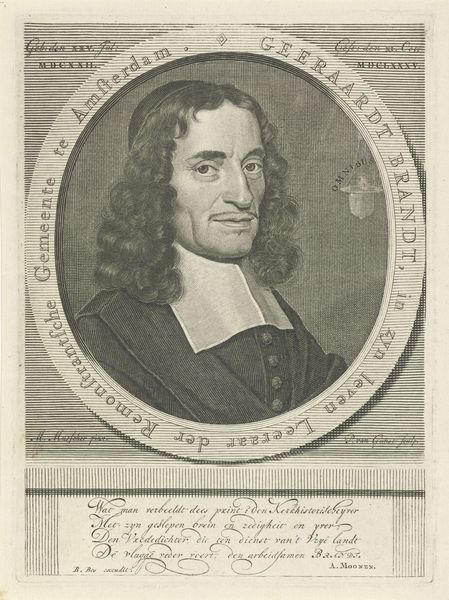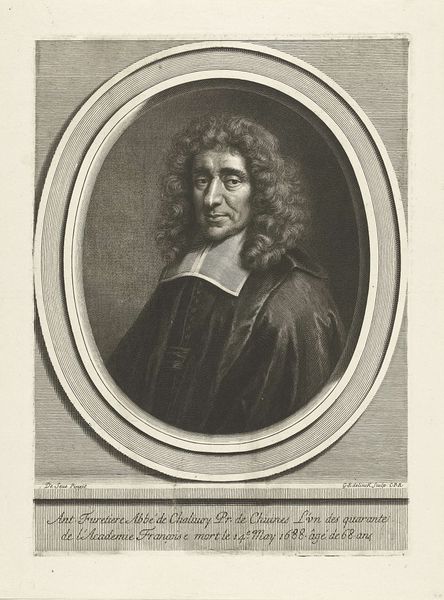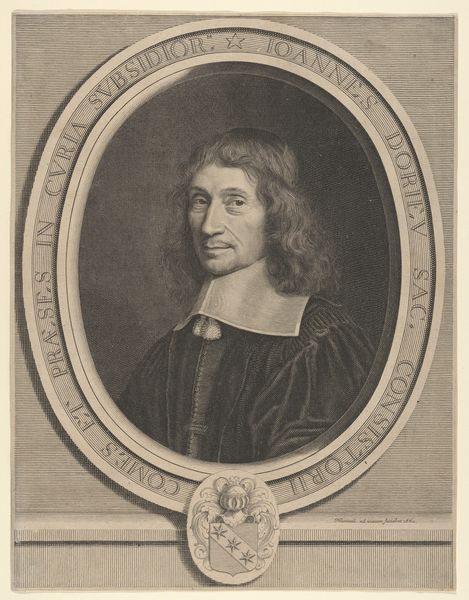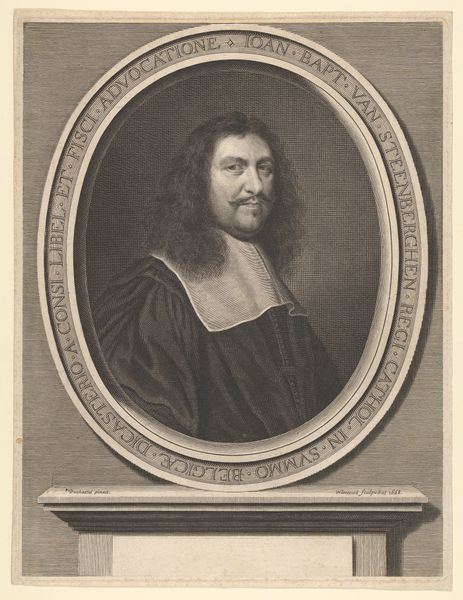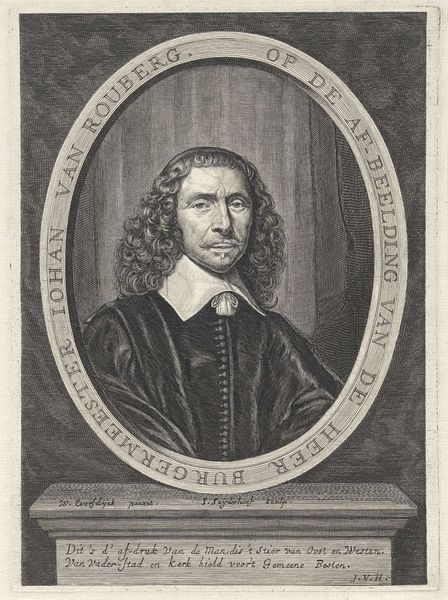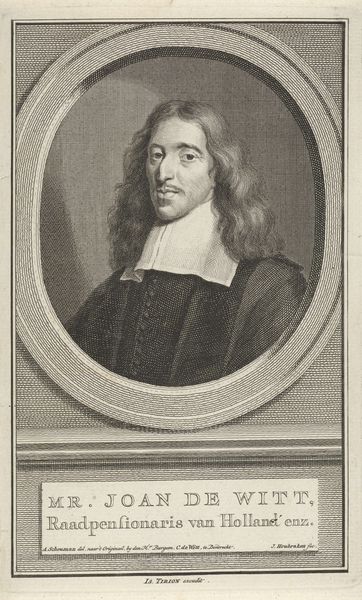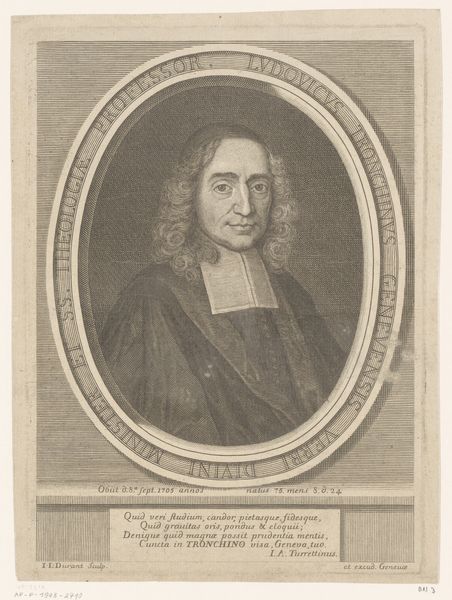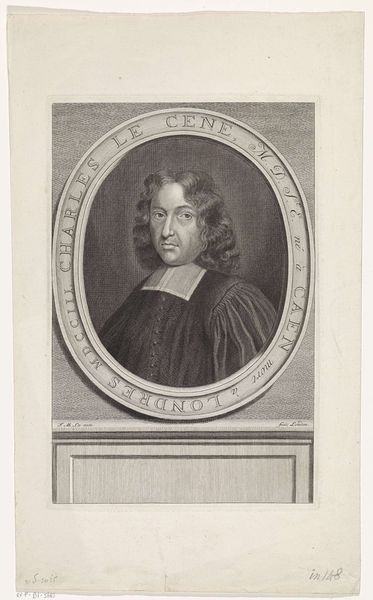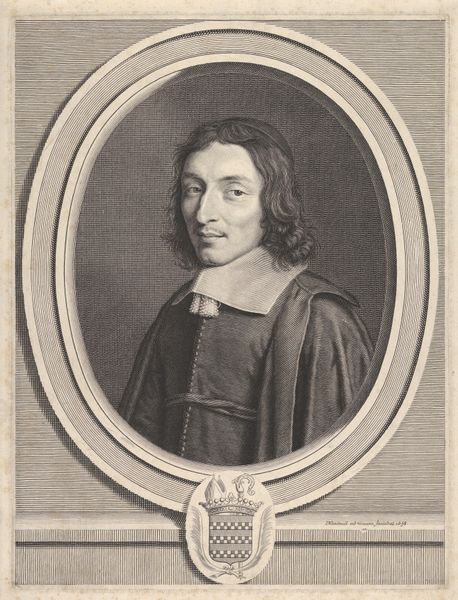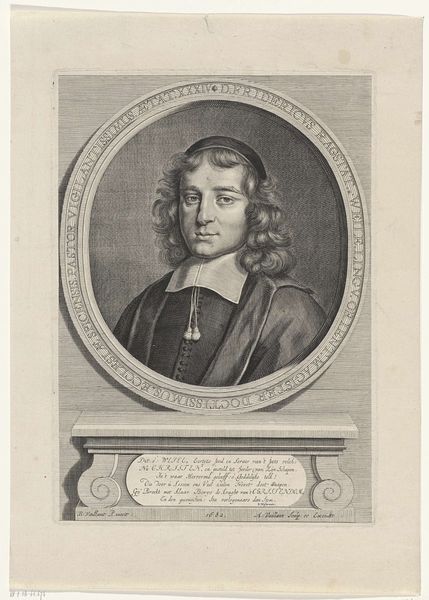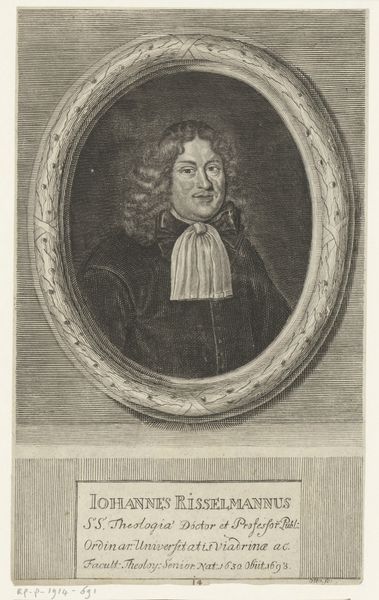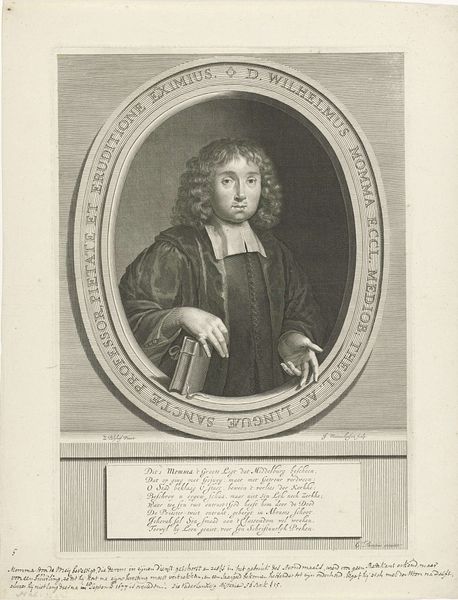
print, engraving
#
portrait
#
baroque
#
dutch-golden-age
# print
#
old engraving style
#
history-painting
#
engraving
Dimensions: width 94 mm, height 144 mm
Copyright: Rijks Museum: Open Domain
Editor: Here we have "Portret van Geeraert Brandt," a portrait engraving by Pieter van Gunst dating from 1659 to 1731. It's a striking image; the oval format gives it a very classical, almost formal feel. What strikes you most about it? Curator: The political context. Engravings like this were often commissioned portraits, tools to solidify status and promote specific narratives during a period of intense social and political change in the Dutch Republic. What kind of image does the engraving try to promote, would you say? Editor: I see a man of intellect. The clothing is restrained, but the flowing hair suggests a certain freedom, and the inscription definitely suggests prestige and accomplishments. So, a person of substance presented with appropriate respect. Curator: Exactly! The act of creating and distributing such portraits allowed individuals, often members of the elite or those seeking upward mobility, to carefully craft their public image. But engravings also played a part in a broader culture of collecting and disseminating knowledge. Did that culture make art more or less accessible, do you think? Editor: I guess more accessible, as printmaking would have allowed wider distribution than an original painted portrait, solidifying their image in a larger society. Curator: Precisely. Consider the relationship between the image and the viewer, and how prints like these shaped perceptions of power and intellectual authority within 17th-century Dutch society. It makes this image less about a simple representation and more about active participation in societal structures. Editor: I never thought about how portraits like this would be perceived outside the elite circle! That's fascinating! Thanks for enlightening me. Curator: And thank you for making me consider it outside the framework of traditional art history! It really changes how you perceive it.
Comments
No comments
Be the first to comment and join the conversation on the ultimate creative platform.
